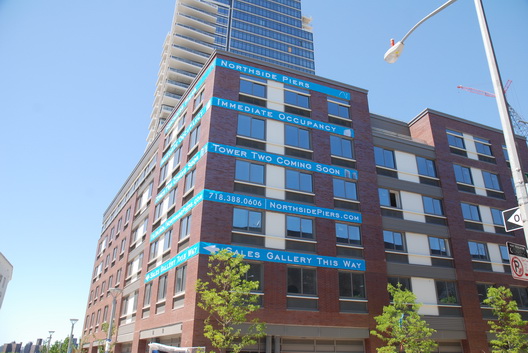John Petro
How Much Should Housing in New York City Cost?

A new condo development called Northside Piers in Williamsburg, Brooklyn made news when it slashed its asking price from around $900 a square foot to $700 a square foot. According to the New York Post:
Rival developers were paying attention to Northside Piers' price drop and the resulting uptick in sales as well."When they dropped those prices, they made anyone inland have to look at their prices," says David Maundrell, president of brokerage Aptsandlofts.com. "We had to be realistic and do what Toll Brothers [the developer of Northside Piers] is doing because it's only a matter of time before buyers realize they can buy for $650 [per square foot] near the water.”
Why were prices at $900 a square foot to begin with? A paper by Ed Glaeser, Joseph Gyourko, Raven Saks from 2004 asks the same question. The authors investigated the selling price of Manhattan condos and compared these prices with the cost of construction. They found that the selling price of condos was much higher than the cost of construction. Using data from 2002, they found the cost of constructing a new housing unit to be approximately $300 a square foot. The selling price of these units was “well over $400 a square foot” and half of the apartments were more than $500 a square foot.
The authors argue that “based on neoclassical economic theory”, competition among builders will eventually drive costs down to just above the cost of construction, unless, that is, there are regulations that limit the size (in this case height) of buildings.
Unfortunately, the authors call these regulations “the regulatory tax.” After all, the article was supported by the Manhattan Institute. This terminology paints all regulation, good or bad, the same color. (The paper takes a few potshots at rent stabilization, a policy that benefits the whole city be ensuring that some families and seniors are able to afford their housing.) Obviously, some forms of regulation are desirable. The question is: do height limits keep housing prices high in Manhattan? Does the opposition to increased density, in Manhattan and the rest of the city, make housing less affordable?
In order to create an environment in which housing is affordable, the city needs to take on the issue from several different angles. One of these angles is increased supply. The city should continue to find areas in which there are opportunities for new development, especially when the area is served well by transit. However, left on its own, the market will not create affordable housing. Williamsburg, with asking prices of $900 a square foot, is a prime example. When rezoning the neighborhood, the city rightfully required developers to include affordable units in new developments in exchange for density bonuses, or the right to build a larger building. New York also needs to provide housing for low-income individuals – a population that will never be served by the market. That’s where rent control and public housing come into the mix.
New York City has a housing shortage. Until we increase the supply of housing, developers will be able to continue to ask for prices that are well above the cost of construction. But, the market alone will not solve our affordable housing problems.
John Petro: Author Bio | Other Posts
Posted at 11:50 AM, May 06, 2009 in
Housing | Urban Affairs
Permalink | Email to Friend










